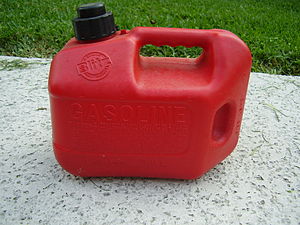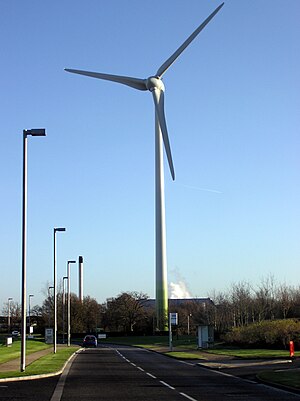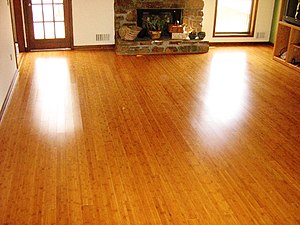 Image via WikipediaPerhaps, the greatest pro or plus side to eating organically is the health benefits. Organic foods differ from many of the conventionally grown foods that are available for sale today because they are not made with chemicals and other additives, some of which may be harmful to our bodies. Organic food is one hundred percent, completely natural. You are also given guarantees, as most organic foods must be certified and pass rigorous tests.
Image via WikipediaPerhaps, the greatest pro or plus side to eating organically is the health benefits. Organic foods differ from many of the conventionally grown foods that are available for sale today because they are not made with chemicals and other additives, some of which may be harmful to our bodies. Organic food is one hundred percent, completely natural. You are also given guarantees, as most organic foods must be certified and pass rigorous tests.Another pro or plus side to eating organically is that organic food is ideal for individuals of all ages. This is great if you are looking to have your whole family eat organic, not just yourself. It is also important know that organic foods aren’t just fruits and vegetables. There are snacks, drinks, and deserts that are all considered organic. Most organic foods, including fruits, vegetables, dairy products, and snacks are designed for individuals of all ages. With that being said, there are also many companies that specialize in selling organic foods for babies and toddlers, for example Earth's Best Organics
Another pro or plus side to making the switch to organic foods is that you can do your part to help the environment, as well as organic farmers. Unfortunately, small family farms seem to be a dying breed in the United States. Many farmers, even those who have been farming for years are finding it too costly to continue. Although many will simply just close down their operations, more and more are choosing to make the switch to organic foods. This not only helps to keep farmers afloat and in business, but it can also help the environment, by eliminating the number of pesticides and other potentially harmful chemicals that are used.
Although there are a number of pros or plus sides to buying and eating organic foods, it is also important to touch on the downsides of doing so as well. One of the biggest cons or downsides associated with eating organic is the cost of doing so. Visiting one of your local supermarkets and walking through an organic food section will give you an idea as to the costs. When compared to other foods, organic food generally does cost more money. While that cost is more than worth it to many, some are turned off by it. With that being said, it is important to know that there are a number of ways that you can save money on organic foods. These ways involve searching for store sales on organic foods or by using organic food coupons. Or, the best way of all is to buy directly from local farmers, thus saving the costs of the "middle man," and also providing more profit to the farmers, and fresher produce for your family.
 Image by istolethetv via FlickrThere are also many individuals who are unhappy with the selection of organic foods that they are able to gain access to locally. For the largest selection of organic foods locally, examine specialty organic food stores, as they specialize solely in the selling of natural foods. You may also check the internet, as there a number of product manufacturers who sell their organic foods online, as well as organic food stores that sell a number of different brands. Even better - visit your local farmer's market, where you can shop at numerous farm stands in one place, and often find fresher organic foods at cheaper prices than you would find in a store.
Image by istolethetv via FlickrThere are also many individuals who are unhappy with the selection of organic foods that they are able to gain access to locally. For the largest selection of organic foods locally, examine specialty organic food stores, as they specialize solely in the selling of natural foods. You may also check the internet, as there a number of product manufacturers who sell their organic foods online, as well as organic food stores that sell a number of different brands. Even better - visit your local farmer's market, where you can shop at numerous farm stands in one place, and often find fresher organic foods at cheaper prices than you would find in a store.Regardless of where you find them, organic foods can be a great addition to your diet, providing more nutrients, better taste, and fewer toxins to contribute to your toxic load.
































